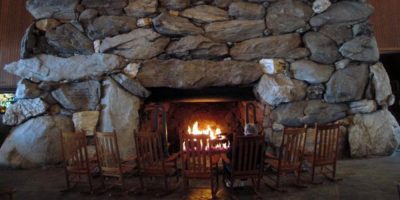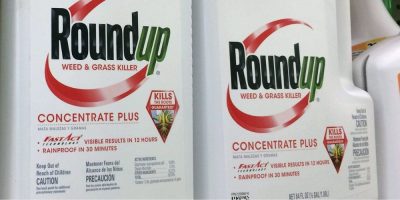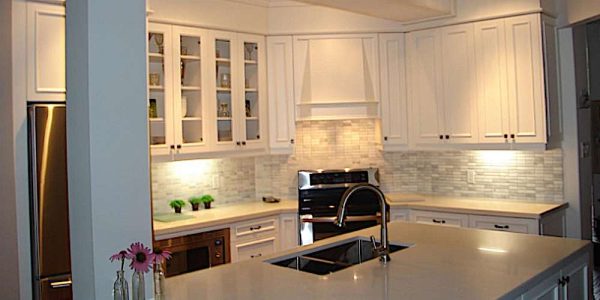
As the days get longer, we all start to feel more active and energized. That makes it the perfect time to throw open the windows and get in some spring cleaning. But before you pull out the toxic cleaners, consider these natural alternatives to clean, disinfect, and freshen up your home.
(Like any cleaning product, remember to test on small inconspicuous areas.)
Clean Your Bedroom
When it comes to your bedroom, the first big project to tackle is your bed. Beds don’t always get as much attention as they deserve. It’s easy enough to throw your sheets into the washing machine. But what do you do with oversized bedding like pillows, duvets, and mattresses?
Mattress And Bedding
To get started, put a couple of drops of lavender essential oil into a cup of baking soda and mix it in. Lavender oil will help make everything smell fresh and it can improve sleep. If you aren’t a fan of lavender, you can try another oil or use baking soda on its own.
Sprinkle the baking soda on your mattress and rub it around the entire surface. Let it sit for at least an hour then vacuum until all the baking soda is gone. This will help deodorize your mattress.
Flip your mattress and repeat on the other side. If the underside is not a pillow top, skip the baking soda but still give it a good vacuum. This will help get rid of any accumulated dust or pet hair.
If there are any stains on the mattress, you’ll want to address them before you deodorize. It’s best to remove stains as they happen but if there are some you’ve missed, try this to remove the stains naturally.
Once your mattress is clean, sprinkle baking soda on one side of your pillows and duvet. Let it sit for at least an hour, vacuum with the hose attachment, flip and repeat. You can also air them out on your clothesline if you have one. This will also help deodorize and freshen.
How To Remove Stains On Bedding And Mattress
- Mix equal parts water and vinegar.
- Spray the stain and let it sit for 5 minutes.
- Blot with a cloth to absorb the moisture and clean up the stain. Don’t rub … this will drive the stain further in and could wear out the material.
- Repeat until the stain disappears.
- Apply your baking soda and leave it for 8 to 10 hours. This will give it time to absorb any remaining moisture from your mattress.
- Vacuum up the baking soda.
- To prevent future stains, consider a mattress protector.
Bathroom Cleaning Tips
Just like the bedroom, baking soda is going to be a lifesaver in the bathroom. But there are a few other items you'll want as well.
All Purpose Bathroom Cleaner
Start with ¾ of a cup of baking soda and ¼ cup of water. Add more water if you want the paste to be thinner or add more baking soda to thicken it up. If you want to add essential oils for a fresh scent you can, but it isn’t necessary.
Use this paste to scrub your sink, bathtub, tiles, and grout. For tough stains, apply the paste and then spray it with vinegar or lemon juice.
To make your own multipurpose spray for the kitchen and bathroom, soak lemon peels in vinegar for two weeks. For a quicker solution, mix 1 part vinegar with 1 part water and add 10 to 15 drops of essential oils. Tea tree, lemon, peppermint, and eucalyptus are great choices. They all have disinfecting properties.
Toilet
You can also use the above paste to scrub your toilet but consider a long soak with vinegar first. This will help remove rings and tough stains. Once you’ve left your toilet to soak, give it a flush then scrub it with the baking soda paste and your toilet brush.
Naturally Bleached Grout
To naturally bleach lighter grout, you can make a paste from lemon juice and cream of tartar. Apply it with a toothbrush and rinse with water once the stain is gone.
Faucets
To clean taps, you can use a salt and lemon juice paste. Apply the mixture with an old toothbrush and then wipe clean. If you’re worried about scratching the finish, you can skip the salt and wipe the taps down with lemon juice.
To clean your bathroom mirrors, add 2 tbsps of vinegar to 1 liter of water in a spray bottle. Spray the mirror then wipe it down with a black and white newspaper or a reusable lint-free towel.
Natural Spring Cleaning In Your Living Room
Next up are out natural cleaning tips for the living room.
Upholstered Furniture
After a long stuffy winter, you’ll want to be sure your couches and other upholstered furniture gets some attention. Like your mattress, you can deodorize cloth couches with lavender baking soda. Just sprinkle it on the furniture, rub it around and let it sit for at least an hour before you vacuum.
Leather Furniture
Clean leather furniture with a 1:1 water and vinegar mixture and a microfibre cloth. Be sure to rub in a circular motion and don’t fully soak the leather.
To condition the leather, HGTV recommends mixing 1 part vinegar and 2 parts linseed oil. Apply the mixture in circular motions and rub it in thoroughly. Let it set for 10 minutes and then buff the leather to make it shine.
Wood Furniture
If you have any wood furniture, you can polish it with olive oil. Olive oil is also a great way to get rid of drink rings and other discolouration.
Kitchen
You can use the same paste we recommended for your bathroom in the kitchen (¾ of a cup of baking soda and ¼ cup of water). You can use it to clean the sink, tiles, and grout.
Stainless Steal
If you have a stainless steel sink, you can give it a good shine with salt and lemon. You can use a salt and lemon juice paste or you can sprinkle the sink with salt and then scrub it with half a lemon. You can also use this combo to scrub and shine your stainless steal cookware.
We don't recommend using salt and lemon on stainless steal appliances as it can scratch and corrode the thin metal. Instead, spray the surface with white vinegar and wipe. Polish the stainless in circular motions with mineral oil, olive oil, or coconut oil to keep the surface streak-free.
PRO TIP: You can also use lemon juice and salt to brighten up your wood cutting boards.
Dishwasher
Locate your dishwasher’s drain and clean around it. Remove the filter, wash it out, and then put it back in the dishwasher. Place one cup of vinegar in a container on the bottom rack and put half a cup of baking soda in a small cup on the top rack. Run the dishwasher then let it sit closed for 20 minutes to steam clean once it's done. Open it up and wipe the sides of the dishwasher with a soft sponge.
Oven
For a regular clean, make a paste using 3/4 cup baking soda and ¼ cup warm water. Remove your oven racks and smear the paste all over the inside of your oven. You can use a 2” paintbrush to apply the paste. Let the paste sit for 15 to 20 minutes. (If you want to do a really deep clean, let it sit overnight.)
While you work, let your oven racks soak in soapy water for a few hours. Clean them with a scouring pad and use the paste for stuck-on stains. Just keep in mind baking soda can discolour aluminum.
Return to your oven and wipe out the paste and loosened grime with a cloth and plastic scraper. If you need to, dampen the paste with a bit of water to get it off easier. Once you’ve removed the paste, wipe down the inside of your oven with equal parts vinegar and water
To help reduce the amount of time you spend cleaning your oven, manage spills as they happen. When there’s a spill in the bottom of your oven, cover it immediately with salt. This will make it easier to wipe up when the oven cools.
Stove Top
To clean your stovetop, use equal parts vinegar and water. For stuck-on grime, use baking soda paste. If you have a glass-top stove, you can use a glass scraper to remove burnt-on spots. To finish off, polish the stovetop with vinegar.
Microwave
Microwaves can be a beast to clean, especially if not everyone in your house covers their food when they heat it up. To make the process easier, put 2 cups of water and 2 tbsp of vinegar (or lemon juice) in a microwave-safe bowl. Place it in the microwave for 5 minutes. Once the alarm goes off, leave the microwave shut for another 3 minutes.
Carefully open the microwave (there will be lots of steam) and remove the bowl with oven mitts. Take out the turntable and wipe the microwave down with a sponge or cloth. Start from the top and work down. You may need to apply some elbow grease on a couple of spots, but most of the grime should wipe out easily.
Coffee Maker / Kettle
Run white vinegar through your coffee maker to remove the scale. Follow up by making a few pots of hot water to clear out the vinegar. For your kettle, boil vinegar and then rinse out thoroughly with water.
Fridge
Remove everything from your fridge and give the inside a good wipe down with vinegar and water. Remove the shelves and take them apart as much as you can. Wash them in your sink with soapy water. Put everything back in the fridge and repeat with the freezer.
Put a bowl of lemon juice or baking soda in the fridge to keep it smelling fresh. Replace it every week or so to maintain the freshness.
Laundry Room
The two main areas of focus in the laundry room are the washing machine and dryer.
Top Load Washer
To clean your top load washing machine, set your washer to the hottest temperature, highest capacity, and longest cycle. Add four cups of vinegar once the machine is full of water. Let it agitate for several minutes then pause the machine. Let it soak for an hour then complete the cycle.
Front Load Washer
For front loaders, select the hottest temperature and add an extra rinse cycle, if that’s an option. Add ¾ cup vinegar to the bleach dispenser or fill it to the max level, if it can’t hold that much. Run the machine. If you couldn’t add an extra rinse cycle, run a rinse cycle to clear out the vinegar. Once complete, open the door and gently pull back the rubber door seal. Wipe it down to remove any debris and grime.
Dryer
To clean your dryer, pull out the lint screen and rinse it thoroughly. While it air-dries, vacuum the lint trap with your hose attachment to clean out any loose lint. Pull the dryer away from the wall and unplug it. Disconnect the dryer hose and vacuum it out. Go outside, clear the vent cover of lint, and vacuum the inside of the vent if you can. Reconnect the hose, plug in the dryer, and push it back into place. Dampen a rag or towel with equal parts water and white vinegar. Toss it in the dryer on high to steam and disinfect the inside of your appliance.
Tips For Cleaning Floors
Now that all of our furniture and surfaces are clean, it's time to work on the floors.
Laminate, Hardwood, Tile, & Vinyl
For hard surfaces, you’ll want to use a spray mop or apply the cleaner with a spray bottle and wipe it up. This helps control the amount of liquid you’ll apply.
Don’t leave standing liquid on the floor as it can damage it. Instead, use a barely damp application and be sure the previous section has dried before moving on. If it hasn’t, you’ll want to towel dry and use less liquid for the next section.
For most hard flooring, mix ½ cup vinegar, ½ cup rubbing alcohol (helps the cleaner dry and disinfects), and ½ cup water. If you want a fresh scent, add 3 to 5 drops of essential oil.
For hardwood, add ½ cup vinegar and 2 to 3 drops of essential oil to 4.5 litres of water.
Carpet
If you have carpet, sprinkle it with baking soda, let it sit for an hour, and vacuum. IF you want, you can mix some essential oils with your baking soda for a nice fresh scent. Use a couple drops of oil to a cup of baking soda.
Tile
Use the same paste recipe that you used to clean the bathroom for your tile floors. Mix ¾ of a cup of baking soda and ¼ cup of water. If needed, add more water if you want the paste to be thinner or add more baking soda to thicken it up. You can also add essential oils for a fresh scent.
Use the paste to scrub the tiles and grout then wipe it up with a damp clean cloth.
Natural Tips For Spring Cleaning Your Home
Here's a video with some additional tips to make sure your spring cleaning goes off without a hitch!
So what are you waiting for? Try some of these tips to naturally spring clean your home. But remember! Always test a small spot before doing a full clean. This will help make sure you won’t damage any finishes.
RELATED: Study shows that infants exposed to cleaning supplies are more likely to develop asthma ...











